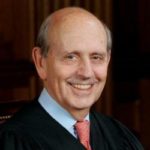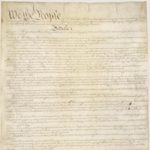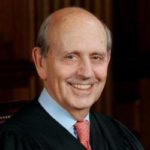Saul Cornell, from Fordham University, and James Basker, the president of the Gilder Lehrman Institute, discuss anti-federalism and dissent in constitutional history. Anti-federalists were advocates against the ratification of the Constitution.
The Nature of Dissent in the Supreme Court
Using Case Studies in the Classroom
Street Law developed seven strategies for teaching about U.S. Supreme Court cases in secondary school classrooms. Use these strategies and Street Law’s case study summaries to supplement civics education about the Supreme Court’s role in the United States.
Act IV: How Did the Constitutional Convention Conclude?

This short video analyzes the final days of the Convention, when the delegates were eager to leave but also mindful of the work they had accomplished. They were “smart people who had learned from spending 88 days together” and even those opposed to the Constitution (Randolph, Mason, and Gerry) had the opportunity to dissent. Professor Gordon Lloyd agrees with Franklin that the Constitution did not achieve perfection but, rather, created a “more perfect union.”
Hoping for Unity, Fearing Rebellion
National conventions are supposed to be a show of party power and solidarity, but there’s always the potential for dissent. See how they have evolved and how they can impact candidates and the electorate. Registration on NewseumED is required to view resource.
The Origin, Nature and Importance of the Supreme Court
Chief Justice John G. Roberts Jr. and high school students discuss the Supreme Court: its history and traditions, how it selects and decides cases, and the role of an independent judiciary. A lesson guide accompanies the video.
A Call to Act: Ledbetter v. Goodyear Tire and Rubber Co.
Grade 6-8 The Bill of Rights & Me
The purpose of this lesson is to investigate the Bill of Rights through the perspective of someone living during the ratification period. After exploring the historical perspective of the Bill of Rights through study of the Dissent of the Minority in Pennsylvania, students will be asked to apply the rights they learned about to their lives today and assess, critique, and solve problems based on the modern meaning of these rights.
A Conversation on Ledbetter v. Goodyear Tire and Rubber Co.

Justice Stephen G. Breyer and a group of high school students discuss separation of powers among the three branches of government in connection with the pay discrimination case that resulted in a 2009 law – the Lilly Ledbetter Fair Pay Act. The video complements the documentary A Call to Act: Ledbetter v. Goodyear Tire and Rubber Co.
Ratifying the Constitution

This lesson introduces students to the vigorous debates between the Federalist and the Anti-Federalists surrounding the ratification of the Constitution that took place in the state conventions.
In the state ratification conventions, delegates argued the wisdom of adopting the Constitution. Elected specifically to serve in these conventions, they came from a range of backgrounds, from the very elite and highly educated, to those of humbler birth and station. State delegates grappled with questions about the nature of democracy, the distribution of wealth and power in society, the rights of individuals and minority groups, and the role of dissent in a republic.

